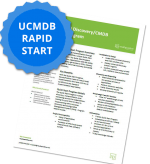10 Guidelines for a Successful SAP Training Boot Camp
By: Matt Angerer
A winning SAP training boot camp combines innovation, SAP eLearning, and a multi-media approach to engage learners and achieve success. Failure to consider user preferences and the quality of training material can jeopardize training outcomes and your ultimate ROI. Fortunately, these pitfalls can be avoided with a careful design system for your training platform.
Below are 10 guidelines for a successful SAP training boot camp.
1) Treat training as an ongoing process as opposed to a one-time event. Approaching training with the appropriate mindset is vital to long term SAP learning success. Below are some ways to develop the appropriate mindset among trainers and learners:
- Avoid single-event training courses and emphasize continuous learning
- Recognize the link between ongoing training and reduced turnover
- Emphasize the benefits of ongoing training, such as new skill development and marketability
Mindset and motivation are critical components to ensuring your SAP training program is successfully adopted. Your employees will feel more engaged and loyal to the company in knowing that leadership has made the training investment necessary to ensure their competence and comfort. With any greenfield SAP implementation, the User Acceptance Testing (UAT) phase is an opportunity for your End Users to both accept the new platform, but also gain the necessary over-the-shoulder training in how SAP helps them accomplish their business tasks (e.g., perform inventory cycle count, or the goods receipt process). However, it’s important to let your end users know that their training has just begun and that they should embrace continuing education because processes and software inevitably change.
Our suggestion is to think of SAP Training as a Marathon, more so than a Sprint. It’s difficult in this day and age to refer to anything IT as a Marathon with such emphasis on velocity and speed. We are trained to be Agile and deliver software to our end users via Sprint Cycles, but it’s important to remind your colleagues that training is more like an Ultra Marathon that requires endurance, patience, and continual upkeep.
2) Designate an individual to spearhead your SAP training boot camp. Prior to the start of your boot camp, identify an individual to lead your training initiative. Your leader would be responsible for the following:
- Outlining an implementation schedule
- Specifying go live dates
- Coordinating opportunities for ongoing learning
- Updating training tools
- Tracking key performance indicators
- Obtaining learner feedback (favorite topics, etc.)
There are a variety of factors you should consider when choosing this individual. We’ve seen organizations look to outside consultants to spearhead their SAP training, otherwise known as an OCM (Organizational Change Manager). The type of individual you choose should have a calming and communicative personality that inspires confidence with your end users. As with every organization, cultures vary – so it’s important to choose someone that you know can mesh well with the organization. However, we caution you to not pick a “Yes Man” just because they won’t cause waves with your end users. People can be likeable and opinionated at the same time – don’t confuse the two. A Senior Director once told me that, “sometimes you have to crack a few eggs to make an omelet – don’t be afraid to mix it up and upset a few people to affect change.”
3) Choose the training format that meets the needs of your audience and budget. Training activities typically occur in either an online format or an offline format. Online training, which encompasses eLearning programs and webinars, has increased in popularity over the years and is gradually replacing traditional classroom training. Weighing the pros and cons of each type is important, as shown below:
- Online training is more efficient, more cost-effective, and easy to customize
- Offline training provides face to face interaction but is more expensive and difficult to schedule
- Online training is often well-received by users because learning can occur anytime and any place
- Offline training requires space, an instructor, and time away from regular duties, which can decrease productivity
Don’t fall into the trap of “death by PowerPoint” as it’s often referred to throughout the industry. Microsoft PowerPoint is great for leading discussions and meetings, but it’s not an effective means to build an SAP training curriculum. Vendors such as Adobe have tools like “Captivate” that can help you create rich and engaging material for your end users to consume on-demand. Adobe also offers a Learning Management System (LMS) offered as a service that your organization can leverage for this training material.
4) Recognize the barriers to successful training. Designing an effective boot camp requires you to anticipate the potential conflicts and challenges that can derail the learning process. Here are a few of the biggest barriers to successful training:
- Limited time. Most people are unable to devote more than one hour to training on any given day. You should realize that people are trying to juggle their day-to-day tasks, along with picking up the new skills required to be successful with SAP.
- Variance in learning pace and style. Not everyone learns at the same pace. We should be accommodating to a wide variety of intellectual capacities and styles of learning. Many folks learn better during a User Acceptance Testing (UAT) phase where a Power User is coaching them over-the-shoulder as they perform business processes within SAP. Others might process an entire eLearning module over the weekend and master the end-to-end supply chain process.
- Competing job responsibilities without clear priorities. There is nothing worse than wasting valuable effort because you’re being pulled in all directions. Blame this on leadership. It’s the responsibility of the managing team to provide the necessary tools and procedures for across-the-board visibility. As an OCM, you should remember that many of your end users are likely juggling competing job responsibilities.
- Negative perceptions associated with training (training is often approached with dread). Changing preconceived notions and perception can be a challenge.
5) Eliminate barriers and challenges prior to initiating your training boot camp. After you have identified the key barriers to training success, you must take steps to mitigate them. By eliminating potential distractions you can boost retention of training material . Below are some ways that ResultsPositive’s SAP eLearning can help eliminate learning barriers:
- Our eLearning platform can allow end users to learn whenever their schedules permit, 24/7/365.
- SAP eLearning allows users to learn at their own pace using any device (Mobile, Tablet, PC) and any Internet Browser.
- SAP eLearning often includes gamification and social learning to make the training process more fun and engaging.
6) Break training down into easily digestible chunks through micro-learning. One of the chief risks associated with traditional classroom training is burnout due to an overwhelming amount of information. Eight hours of continuous exposure to complex material is often too much for learners to handle. Users begin to lose interest in material and information absorption drops dramatically. Micro-learning helps in the following ways:
- Learning occurs in short 5-30 minute increments of time
- Training sessions are brief, but more focused
- Users are more receptive to training that features micro-learning
7) Make training engaging by incorporating gamification and social learning. Your SAP training boot camp will be better received if you strive to engage learners from the start. Training camps should include activities that are popular with users such as the following:
- YouTube videos that illustrate useful shortcuts and tips
- Online competitions, leaderboards, and other social learning activities
- Webinars on SAP topics
8) Eliminate antiquated training methods. In addition to including activities that are popular among users, you should seek to eliminate unpopular or ineffective tactics. Many of these tactics are associated with offline training and include the methods below:
- Extended classroom sessions
- Multi-module word documents and thick training binders
- Lengthy lectures by a single speaker
9) Measure your boot camp’s success. Build your SAP training boot camp with your desired results in mind. This process starts by identifying your key performance indicators and outlining ways to measure them. Success metrics are a critical element of your training program because they allow you to target opportunities for improvement. Below are some common examples of success metrics:
- Most preferred and least preferred topics
- Percentage of training material completed
- Quizzes and tests to assess retention of material
10) Track your expenses and update your training program accordingly. A successful SAP training boot camp will yield strong ROI. When building your training platform, be sure to carefully track all expenses to help determine if your investment truly pays off. A list of expenses to track should include:
- Funds spent on consulting fees
- Number of help desk tickets created and cost of each ticket
- Cost of training materials for each user
Even the most effective training programs should be evaluated at least once annually. Content should be updated regularly to ensure that the latest industry trends and regulations are covered. Costs should also be reviewed to ensure that a training program remains within budget.
Final Recommendations
The best path to designing a successful SAP training boot camp requires the input of a trusted SAP expert. The software testing professionals with ResultsPositive have the tools and resources to help make sure that your SAP training boot camp is engaging, effective, and results-driven. We invite you to contact us to learn more about our single platform approach to SAP success.
Subscribe for the latest RP Blog Updates:










